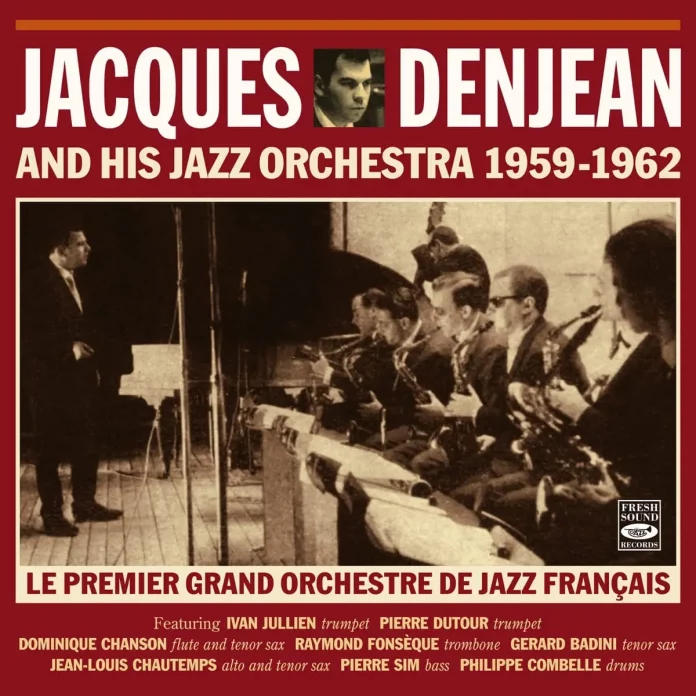Where the Glenn Miller band was almost petrified by routine and lack of bounce, Count Basie’s was a travelling fireworks display. Stationed between them were bands such as Ted Heath’s in Britain that more or less avoided Miller’s timidity but could never rise to the ricochet and explosive potential of Basie.
That Basie, or the Basie style, was the wish of any mid-20th century leader wanting more than jazz orientation was illustrated in France by the Jacques Denjean jazz orchestra, which modelled itself on the 1950s Basie powerhouse. All its recordings from 1959 to 1962 – 19 tracks – are now available on this Fresh Sounds compilation.
Denjean’s orchestra was short-lived but packed a lot into its existence by quickly realising its leader’s expectations. On the evidence of this disc, it was both influenced and inspired by Basie and, to an unavoidable extent, maybe sounded like him. But the versatile Denjean – conductor, pianist, arranger, and composer – was no doting admirer. His version of April In Paris is really a feature for trumpeter Gilles Thibaut and when the whole band is roused later it sounds more brassily Maynard Ferguson than Basie. Thibaut also features with tenor saxophonist Pierre Gossez on the Basie-esque Sablons 28-26, a leisurely piece with minimalist Basie piano and a central detonation.
Denjean could not only arrange in the Basie style, achieving a similar sax-choir sound, but write in it too. Sablons 28-26 was his. So was Swingin’ The Madison, which features notably Dominique Chanson’s shades-of-Hawkins tenor and the terrier trombone of Claude Gousset, and is furiously power-driven in a post-Basie manner. Denjean’s Tenor Contest has not so much a contest as a choice of tenors in Chanson again and Gérard Badini. Denjean was blessed with soloists who knew their stuff and, being in jazz-mad France, there were enough of them to join the gang. Altoist Jacques Nourredine joins Chanson and Badini for Gillespie’s The Champ, which, orchestrally, is more Diz than Bill.
Neither Denjean nor the band was set in aspic. They moved on from incendiary 1950s swing to a sort of funk-rock and in 1963, after these recordings were made, they out-polled Claude Bolling and Martial Solal as the top jazz orchestra in the annual Jazz Hot popularity stakes.
Discography
Sablons 28-26; Somebody Loves Me; April In Paris; The Nearness Of You; Blue Moon; Près De La Fontaine; African Waltz; Swingin’ The Madison; The Huckle-Buck; The Big “M”; Madison Time; Flash; Tenor Contest; Walkin’; Studio 1; The Champ; St Louis Blues; Honky Tonk Tonk; Hallelujah (65.16)
Denjean (p, cond, arr); Gilles Thibaut, Ivan Jullien, Pierre Dutour (t); Dominique Chanson (f, ts); Gérard Badini (ts); Raymond Fonsèque, Michel Camicas (tb); Jean-Louis Chautemps (as, ts); Henri Jouot (bar); Pierre Sim (b); Philippe Combelle (d); Pierre Cullaz (g); and others. Paris, 1959-62.
Fresh Sound Records FSR-CD 1131
















